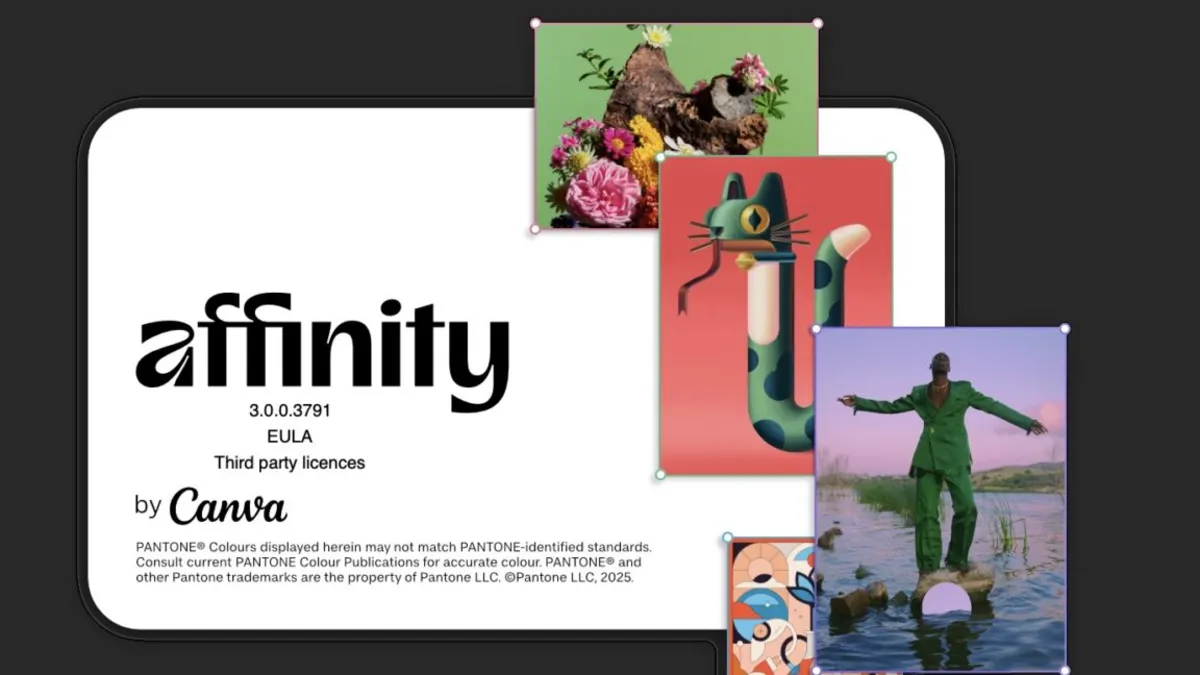
In early 2023, the graphic design platform Canva made headlines by acquiring the Affinity image-editing and publishing applications. This move raised significant questions regarding the integration of the companies' priorities and products. How would Canva cater to users who preferred Affinity’s perpetually licensed apps over Adobe’s subscription model? Additionally, how would Affinity’s strong opposition to generative AI align with Canva’s adoption of these technologies? Recently, Canva has provided clarity on these matters with the launch of a brand-new unified app.
The newly released app, named Affinity by Canva, combines the functionalities of the Photo, Designer, and Publisher applications into a single software solution. Users can access the core features of this app for free with a Canva user account. However, it is important to note that generative AI features are gated and require a paid subscription plan, priced at $120 per year for individual users. For existing Affinity users concerned about this shift, the news appears largely positive in the short to medium term. The fundamental features remain free, while the additional paid features are ones that many users may not feel compelled to purchase.
While the new Affinity app seems beneficial, it may not be well-received by those who prefer the predictability of pay-once-own-forever software. Users may also be apprehensive about how Canva might define the boundary between free and premium features in the future. The Affinity app, internally referred to as version 3, is compatible with both x86 and Arm versions of Windows, as well as being a universal app for both Apple Silicon and Intel Macs. It supports macOS versions starting from 10.15 Catalina and Windows 11, along with later releases of Windows 10. An iPad version is also on the horizon, set to replace the older Affinity iPad apps.
Affinity CEO Ash Hewson emphasized the importance of community involvement in the development of the new app. In a statement, he noted, “For ten years, Affinity has been the tool of choice for professionals who care deeply about craft.” The new Affinity app was developed through extensive collaboration with its community, incorporating feedback, feature requests, and shared ideas. This new version aims to prioritize performance, reliability, and creative freedom—elements that professionals value the most.
While Adobe offers free-to-use variants of Photoshop, they are often limited compared to the full version. Hewson explicitly stated that Affinity aims to avoid this approach with their new software. Currently, the paid subscription unlocks access to in-app tools such as Canva AI Studio, which features familiar options like Generative Fill, Expand & Edit, and Remove Background. Hewson reassured users that the generative AI features are designed with privacy and control as priorities, ensuring that work done in Affinity's apps will not be utilized for training AI models.
For users still utilizing the older versions of Affinity apps, a dedicated page has been established, along with a comprehensive FAQ section. Both Affinity and Canva have committed to maintaining activation servers and downloads for all Affinity v1 and v2 apps for the foreseeable future. This will allow existing users to continue using the versions they are comfortable with. Users can also link their Serif Affinity store accounts to their new Canva accounts for easy access to legacy downloads.
However, it’s important to note that the older versions of the Affinity apps will not receive future updates and will be incapable of opening files created in the new Canva-branded Affinity app. The new Affinity v3 app cannot save in a format compatible with older Affinity v1 or v2 apps. During testing, users attempting to open Affinity v2 files in Affinity v3 were informed that saving any edits would render those files incompatible with previous versions. Similar to users of the long-standing Adobe Photoshop CS6, Affinity v2 users may continue using their software without immediate issues. Yet, without ongoing support, these older versions may face challenges as operating systems evolve.
The launch of Affinity by Canva marks an exciting new chapter for graphic design enthusiasts and professionals alike. While the integration of generative AI features and subscription models may raise concerns for some users, the commitment to core functionality and community-driven development shines through. As the design landscape continues to evolve, it will be fascinating to see how Canva and Affinity navigate this new terrain and support their user base.